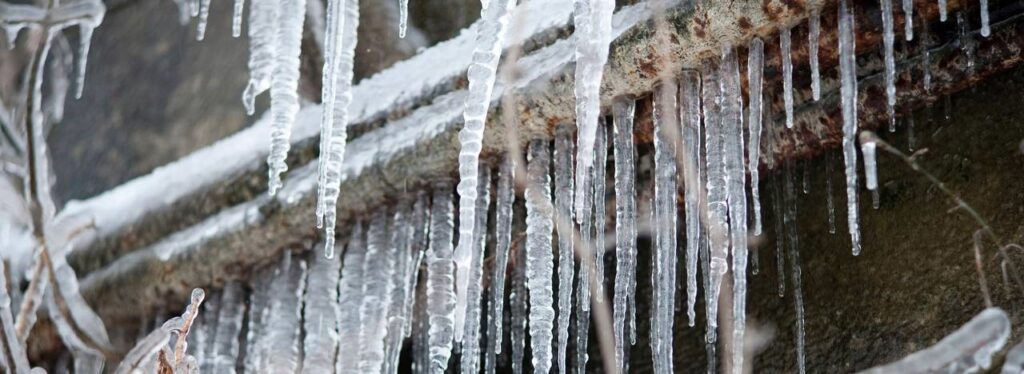How to Defend Pipes from Freezing: Specialist Advice
How to Defend Pipes from Freezing: Specialist Advice
Blog Article
The content directly below on the subject of 6 Ways to Prevent Frozen Pipes is immensely captivating. Check it out yourself and see what you think of it.

Winter can ruin your plumbing, especially by freezing pipelines. Here's just how to stop it from taking place and what to do if it does.
Introduction
As temperature levels decline, the danger of icy pipelines rises, potentially resulting in pricey repairs and water damage. Comprehending just how to avoid icy pipelines is critical for home owners in chilly climates.
Comprehending Frozen Pipelines
What causes pipelines to freeze?
Pipes ice up when exposed to temperatures listed below 32 ° F (0 ° C) for expanded periods. As water inside the pipelines freezes, it broadens, putting pressure on the pipeline walls and possibly causing them to break.
Dangers and damages
Frozen pipelines can result in water supply disruptions, property damages, and expensive repair work. Burst pipes can flood homes and cause extensive architectural damage.
Signs of Frozen Pipes
Identifying frozen pipes early can stop them from bursting.
How to determine icy pipelines
Try to find decreased water circulation from faucets, unusual smells or sounds from pipes, and noticeable frost on subjected pipelines.
Prevention Tips
Insulating vulnerable pipes
Wrap pipelines in insulation sleeves or use warm tape to safeguard them from freezing temperatures. Focus on pipes in unheated or exterior areas of the home.
Home heating techniques
Keep indoor rooms adequately warmed, especially areas with pipes. Open up closet doors to allow cozy air to distribute around pipes under sinks.
Securing Outdoor Pipes
Garden hoses and outside faucets
Separate and drain garden hose pipes before winter season. Set up frost-proof faucets or cover outdoor taps with shielded caps.
What to Do If Your Pipes Freeze
Immediate actions to take
If you presume icy pipelines, keep faucets open to alleviate pressure as the ice thaws. Utilize a hairdryer or towels taken in hot water to thaw pipelines gradually.
Long-Term Solutions
Structural changes
Take into consideration rerouting pipes far from outside wall surfaces or unheated locations. Add extra insulation to attics, cellars, and crawl spaces.
Upgrading insulation
Invest in high-grade insulation for pipelines, attics, and walls. Correct insulation aids keep consistent temperature levels and decreases the risk of icy pipelines.
Conclusion
Avoiding frozen pipelines needs positive steps and fast actions. By recognizing the reasons, indications, and preventive measures, homeowners can protect their plumbing throughout cold weather.
5 Ways to Prevent Frozen Pipes
Drain Outdoor Faucets and Disconnect Hoses
First, close the shut-off valve that controls the flow of water in the pipe to your outdoor faucet. Then, head outside to disconnect and drain your hose and open the outdoor faucet to allow the water to completely drain out of the line. Turn off the faucet when done. Finally, head back to the shut-off valve and drain the remaining water inside the pipe into a bucket or container. Additionally, if you have a home irrigation system, you should consider hiring an expert to clear the system of water each year.
Insulate Pipes
One of the best and most cost-effective methods for preventing frozen water pipes is to wrap your pipes with insulation. This is especially important for areas in your home that aren’t exposed to heat, such as an attic. We suggest using foam sleeves, which can typically be found at your local hardware store.
Keep Heat Running at 65
Your pipes are located inside your walls, and the temperature there is much colder than the rest of the house. To prevent your pipes from freezing, The Insurance Information Institute suggests that you keep your home heated to at least 65 degrees, even when traveling. You may want to invest in smart devices that can keep an eye on the temperature in your home while you’re away.
Leave Water Dripping
Moving water — even a small trickle — can prevent ice from forming inside your pipes. When freezing temps are imminent, start a drip of water from all faucets that serve exposed pipes. Leaving a few faucets running will also help relieve pressure inside the pipes and help prevent a rupture if the water inside freezes.
Open Cupboard Doors
Warm your kitchen and bathroom pipes by opening cupboards and vanities. You should also leave your interior doors ajar to help warm air circulate evenly throughout your home.

We hope you enjoyed our topic about How To Avoid Freezing Pipes. Thanks so much for finding the time to browse our blog post. So long as you appreciated our blog post please be sure to share it. Many thanks for your time. Come back soon.
Schedule Today! Report this page